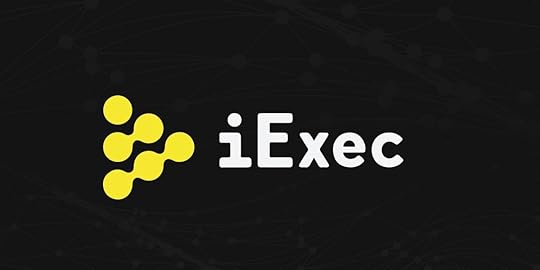Can Universities Detect Chatgpt?
The rapid rise of artificial intelligence (AI) tools like ChatGPT has revolutionized the way students and educators approach learning, research, and communication. While these tools offer unparalleled convenience and efficiency, they also present new challenges, particularly in the context of academic integrity. As ChatGPT becomes an increasingly prominent tool for students to complete assignments, universities are grappling with the question: Can AI-generated content be reliably detected? This article delves into the nuances of AI detection, the tools available, and the implications for academic institutions.
The Appeal of ChatGPT for Students
ChatGPT, developed by OpenAI, is an advanced language model capable of generating coherent and contextually appropriate responses to a wide range of prompts. For students, this means the ability to quickly draft essays, complete homework, and even prepare for exams. Its appeal lies in its accessibility, speed, and ability to mimic human-like writing styles. However, the ease with which students can use ChatGPT to bypass traditional learning processes has raised concerns among educators.
The Challenge of Detection
Detecting content generated by AI tools like ChatGPT is not a straightforward task. The very feature that makes ChatGPT so effective—its ability to produce human-like text—also makes it difficult to identify. Here are some key challenges:
Human-like Text Generation: ChatGPT produces text that is often indistinguishable from that written by humans, particularly in short-form responses or generalized topics.
Customization: Users can fine-tune prompts to generate highly specific and nuanced responses, making it even harder to identify patterns indicative of AI-generated text.
Rapid Advancements: As AI technology evolves, so do its capabilities. Detection methods may struggle to keep up with these advancements, creating a continuous game of catch-up for universities.
Existing Detection Tools
Despite the challenges, several tools and techniques have been developed to help universities detect AI-generated content. Here are some of the most notable:
AI Detection Software
Platforms like GPTZero, Originality.ai, and Turnitin have developed AI detection tools designed to flag AI-generated content. These tools analyze text for patterns such as:
Repetitive Sentence Structures: AI-generated text often exhibits predictable sentence patterns.
Unnatural Phraseology: Some AI outputs contain phrases that may seem out of context or overly formal.
Probability Scores: Tools assign a likelihood score indicating whether a piece of text was generated by AI.
Plagiarism Checkers with AI Detection Features
Popular plagiarism detection platforms, such as Turnitin, have incorporated AI detection features. These tools aim to identify not just direct plagiarism but also content that shows signs of being AI-generated.
Stylometric Analysis
Stylometric analysis involves examining a writer’s unique style and comparing it to the submitted work. For instance, a sudden shift in vocabulary, tone, or complexity may raise red flags. While this method is not foolproof, it provides another layer of scrutiny.
Limitations of Detection Tools
While detection tools have shown promise, they are not without limitations:
False Positives and Negatives: Detection algorithms can misclassify human-written text as AI-generated and vice versa. This poses a challenge for fair evaluation.
Context Dependency: Detection tools may struggle with texts that incorporate multiple sources, making it harder to discern whether the content was AI-generated or heavily paraphrased.
Evolving AI Models: As AI models become more sophisticated, they produce increasingly human-like text, which detection tools may fail to identify accurately.
Limited Dataset Training: Many detection tools are trained on older versions of AI models, limiting their ability to identify content generated by newer iterations like GPT-4.
Strategies Universities Can Adopt
Given the challenges associated with AI detection, universities must adopt a multifaceted approach to address the issue. Here are some strategies:
Educating Students on Ethical AI Use
Universities should emphasize the ethical implications of using AI tools. Workshops, seminars, and coursework can help students understand when and how AI can be used appropriately.
Integrating AI into the Curriculum
Instead of viewing AI as a threat, universities can incorporate it into their teaching methods. For example, instructors can design assignments that require students to critically analyze AI-generated content or use AI tools as part of their research process.
Promoting Transparent Policies
Clear guidelines on the acceptable use of AI tools can help prevent misuse. Universities should outline consequences for unethical behavior while encouraging students to disclose when they’ve useInvesting in Detection Technology
By adopting advanced detection tools and regularly updating them, universities can stay ahead of the curve. Collaborating with tech companies and researchers to refine these tools is also crucial.
Fostering Original Work
Encouraging in-class assessments, oral presentations, and collaborative projects can reduce reliance on AI-generated content. These formats make it more difficult for students to use AI tools to complete their work.
Ethical and Legal Considerations
The rise of AI detection tools raises ethical and legal questions. For instance:
Privacy Concerns: Detection tools may require access to students’ submissions, raising concerns about data security and privacy.
Fairness: False positives could unfairly penalize students, leading to disputes and potential legal challenges.
AI Ownership: If students use AI tools but significantly modify the output, to what extent can the work be considered their own?
Accessibility: Not all students have equal access to AI tools. Policies must account for disparities to ensure fairness.
The Future of AI Detection in Academia
As AI continues to evolve, so too will the methods for detecting its use. Future advancements may include:
Real-Time Detection: Tools embedded within learning management systems (LMS) could flag AI use during the writing process.
Behavioral Analysis: Tracking how students engage with assignments, such as time spent on tasks, could offer insights into whether AI tools were used.
AI Integration: Universities may develop their own AI tools to monitor and analyze student submissions.
Global Collaboration: Educational institutions worldwide could collaborate to develop standardized guidelines and detection methods.
Conclusion
The question of whether universities can detect ChatGPT-generated content is complex and multifaceted. While detection tools provide a partial solution, they are not foolproof. Universities must adopt a balanced approach that includes education, ethical guidelines, and technological investments to address the challenges posed by AI tools. Rather than viewing AI as a threat, institutions should embrace it as an opportunity to rethink and enhance the learning process. Ultimately, fostering a culture of integrity and innovation will ensure that both students and educators can navigate the AI revolution effectively.
.lwrp.link-whisper-related-posts{
margin-top: 40px;margin-bottom: 30px;
}
.lwrp .lwrp-title{
}.lwrp .lwrp-description{
}
.lwrp .lwrp-list-container{
}
.lwrp .lwrp-list-multi-container{
display: flex;
}
.lwrp .lwrp-list-double{
width: 48%;
}
.lwrp .lwrp-list-triple{
width: 32%;
}
.lwrp .lwrp-list-row-container{
display: flex;
justify-content: space-between;
}
.lwrp .lwrp-list-row-container .lwrp-list-item{
width: calc(25% - 20px);
}
.lwrp .lwrp-list-item:not(.lwrp-no-posts-message-item){
max-width: 150px;
}
.lwrp .lwrp-list-item img{
max-width: 100%;
height: auto;
object-fit: cover;
aspect-ratio: 1 / 1;
}
.lwrp .lwrp-list-item.lwrp-empty-list-item{
background: initial !important;
}
.lwrp .lwrp-list-item .lwrp-list-link .lwrp-list-link-title-text,
.lwrp .lwrp-list-item .lwrp-list-no-posts-message{
}@media screen and (max-width: 480px) {
.lwrp.link-whisper-related-posts{
}
.lwrp .lwrp-title{
}.lwrp .lwrp-description{
}
.lwrp .lwrp-list-multi-container{
flex-direction: column;
}
.lwrp .lwrp-list-multi-container ul.lwrp-list{
margin-top: 0px;
margin-bottom: 0px;
padding-top: 0px;
padding-bottom: 0px;
}
.lwrp .lwrp-list-double,
.lwrp .lwrp-list-triple{
width: 100%;
}
.lwrp .lwrp-list-row-container{
justify-content: initial;
flex-direction: column;
}
.lwrp .lwrp-list-row-container .lwrp-list-item{
width: 100%;
}
.lwrp .lwrp-list-item:not(.lwrp-no-posts-message-item){
max-width: initial;
}
.lwrp .lwrp-list-item .lwrp-list-link .lwrp-list-link-title-text,
.lwrp .lwrp-list-item .lwrp-list-no-posts-message{
};
}
Related Posts

How to Make Money Reviewing Amazon Products

10 Ways to Monetize with Your dApps

What is Wrapped XRP (wXRP)?

How To Make Money As A Stay-At-Home Mom (Or Parent)

How do I start investing with little money?

What is RLC in crypto?

Et tempore illo beatae debitis

Nvidia Corporation: Pioneering the Future of Graphics and AI



